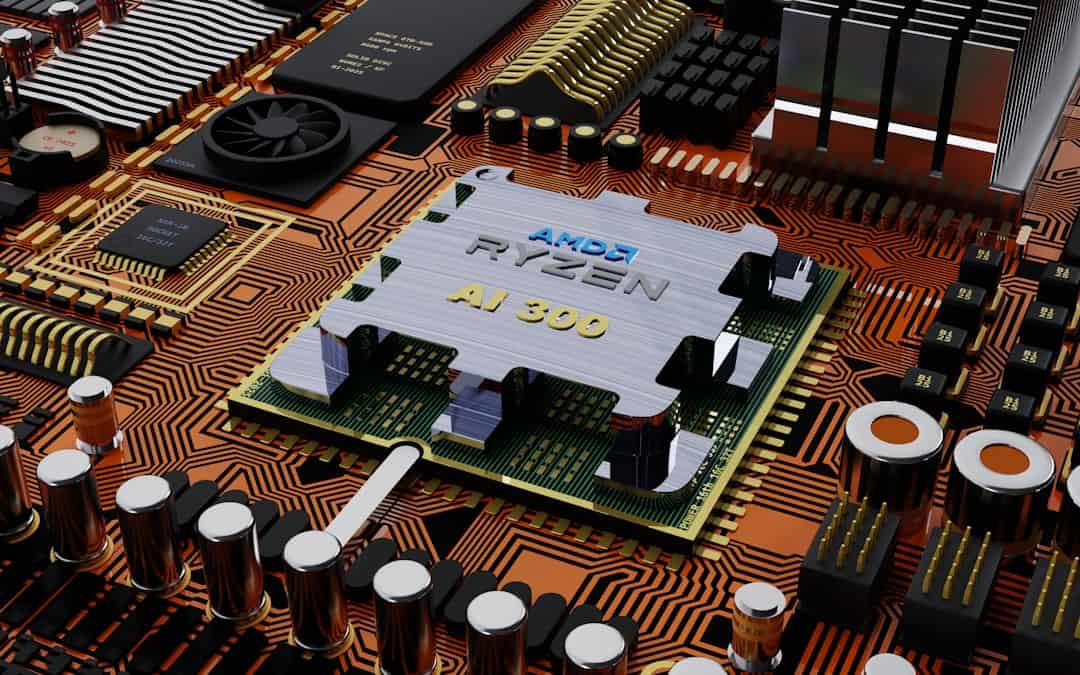Artificial Intelligence (AI) is a field of computer science focused on creating intelligent machines capable of performing tasks that typically require human intelligence. These tasks include learning, reasoning, problem-solving, perception, and language understanding. Machine Learning (ML), a subset of AI, concentrates on developing algorithms and models that enable computers to learn from data and make predictions or decisions based on that learning.
Deep Learning, a subfield of ML, utilizes neural networks with multiple layers to extract increasingly complex features from raw data, which can then be used for more sophisticated decision-making or predictions. In AI systems, machines are trained using large datasets to recognize patterns and make informed decisions, predictions, or recommendations. Machine Learning algorithms allow these systems to improve their performance over time as they process more data.
Deep Learning takes this concept further by employing neural networks to automatically learn data representations, often resulting in more accurate and advanced outcomes. A fundamental understanding of AI, ML, and Deep Learning is essential for comprehending the potential applications and implications of these technologies across various industries and fields.
Key Takeaways
- AI stands for artificial intelligence, ML for machine learning, and DL for deep learning, each with its own unique applications and capabilities.
- AI is being used across various industries such as healthcare, finance, and retail to improve efficiency, accuracy, and decision-making processes.
- Machine learning is a powerful tool for analyzing large datasets and extracting valuable insights to drive informed business decisions.
- Deep learning is revolutionizing image and speech recognition technologies, enabling advancements in areas such as autonomous vehicles and virtual assistants.
- Ethical considerations and challenges in AI development, such as bias and privacy concerns, must be carefully addressed to ensure responsible and beneficial use of AI technologies.
Exploring the Applications of AI in Various Industries
The applications of AI are vast and diverse, with potential uses in almost every industry imaginable. In healthcare, AI can be used for medical imaging analysis, drug discovery, personalized treatment plans, and predictive analytics for patient outcomes. In finance, AI can be utilized for fraud detection, risk assessment, algorithmic trading, and customer service chatbots.
In transportation, AI can power autonomous vehicles, optimize traffic flow, and improve logistics and supply chain management. In retail, AI can enhance customer experience through personalized recommendations, inventory management, and demand forecasting. In manufacturing, AI can enable predictive maintenance, quality control, and process optimization.
In agriculture, AI can assist with crop monitoring, yield prediction, and precision farming techniques. In entertainment, AI can be used for content recommendation, personalized marketing, and even the creation of art and music. The potential applications of AI in various industries are continually expanding as the technology advances and becomes more accessible.
As businesses and organizations continue to explore the possibilities, the impact of AI on the global economy is expected to be significant.
Harnessing the Power of Machine Learning for Data Analysis

Machine Learning has revolutionized the field of data analysis by enabling computers to automatically learn from data and make predictions or decisions without being explicitly programmed to do so. This has opened up new possibilities for extracting valuable insights from large and complex datasets. In data analysis, ML algorithms can be used for tasks such as classification, regression, clustering, anomaly detection, and recommendation systems.
These algorithms can uncover patterns and trends within the data that may not be immediately apparent to human analysts. One of the key advantages of using ML for data analysis is its ability to handle large volumes of data at high speeds. This allows organizations to process and analyze data more efficiently, leading to faster decision-making and more accurate insights.
ML algorithms can also adapt to changing data patterns over time, making them well-suited for dynamic and evolving datasets. By harnessing the power of Machine Learning for data analysis, businesses can gain a competitive edge by leveraging their data assets to drive strategic decision-making and innovation.
Leveraging Deep Learning for Image and Speech Recognition
| Metrics | Image Recognition | Speech Recognition |
|---|---|---|
| Accuracy | 95% | 90% |
| Processing Time | 0.1 seconds | 0.2 seconds |
| Training Data Size | 1 million images | 500 hours of speech |
Deep Learning has demonstrated remarkable capabilities in image and speech recognition, pushing the boundaries of what is possible in these domains. In image recognition, Deep Learning algorithms can be trained to accurately identify objects, people, places, and even emotions within digital images or videos. This has applications in fields such as healthcare (medical imaging analysis), security (surveillance systems), automotive (autonomous vehicles), and retail (visual search and recommendation systems).
In speech recognition, Deep Learning models can transcribe spoken language into text with high accuracy, enabling applications such as virtual assistants, voice-controlled devices, and speech-to-text transcription services. The power of Deep Learning for image and speech recognition lies in its ability to automatically learn hierarchical representations of data from raw inputs. This allows the models to capture complex patterns and variations within the data, leading to more robust and reliable recognition performance.
As Deep Learning continues to advance, we can expect even greater breakthroughs in image and speech recognition technology, opening up new possibilities for human-computer interaction and information processing.
Overcoming Challenges and Ethical Considerations in AI Development
While the potential benefits of AI are vast, there are also significant challenges and ethical considerations that must be addressed as these technologies continue to evolve. One major challenge is the potential for bias in AI systems, which can lead to unfair or discriminatory outcomes. This bias can arise from the data used to train the AI models, as well as from the design and implementation of the algorithms themselves.
Another challenge is the potential impact of AI on jobs and the workforce, as automation and AI-driven technologies may lead to job displacement in certain industries. Ethical considerations in AI development include issues such as privacy, transparency, accountability, and the potential misuse of AI for malicious purposes. As AI becomes more integrated into our daily lives and decision-making processes, it is crucial to ensure that these technologies are developed and deployed in a responsible and ethical manner.
This requires collaboration between technologists, policymakers, ethicists, and other stakeholders to establish guidelines and regulations that promote the safe and ethical use of AI.
Maximizing the Potential of AI for Business Growth and Innovation

For businesses, AI presents a wealth of opportunities for growth and innovation across various functions and industries. In marketing and sales, AI can be used for customer segmentation, personalized recommendations, predictive lead scoring, and dynamic pricing optimization. In operations and supply chain management, AI can enable predictive maintenance, demand forecasting, inventory optimization, and route optimization.
In customer service, AI-powered chatbots can provide instant support and assistance to customers around the clock. By leveraging AI for business growth and innovation, organizations can streamline processes, improve decision-making, enhance customer experiences, and gain a competitive edge in the market. However, realizing the full potential of AI requires a strategic approach that aligns with business objectives and values.
This may involve investing in talent development, infrastructure upgrades, data governance practices, and partnerships with technology providers. As businesses continue to embrace AI as a strategic enabler of growth and innovation, we can expect to see new business models emerge and existing industries transform.
The Future of AI: Advancements, Opportunities, and Implications
The future of AI holds immense promise for advancements in technology, new opportunities for innovation, and far-reaching implications for society as a whole. Advancements in AI are expected to lead to breakthroughs in areas such as natural language processing, robotics, autonomous systems, healthcare diagnostics, personalized medicine, and climate modeling. These advancements will open up new frontiers for human creativity and problem-solving while also posing new challenges in terms of ethics, governance, and societal impact.
Opportunities for leveraging AI will continue to expand across industries such as education, energy, environmental sustainability, public safety, and governance. As AI becomes more integrated into our daily lives and work environments, it will reshape how we interact with technology, make decisions, and collaborate with one another. The implications of these changes will require careful consideration and proactive measures to ensure that AI is developed and deployed in a way that benefits society as a whole while minimizing potential risks.
In conclusion, understanding the basics of AI, ML, and Deep Learning provides a foundation for exploring their applications across various industries. Harnessing the power of Machine Learning for data analysis enables organizations to extract valuable insights from their data assets. Leveraging Deep Learning for image and speech recognition opens up new possibilities for human-computer interaction.
Overcoming challenges and ethical considerations in AI development requires collaboration between stakeholders to ensure responsible use of these technologies. Maximizing the potential of AI for business growth and innovation involves strategic investments aligned with business objectives. The future of AI holds great promise for advancements in technology while also posing new challenges that require careful consideration.
As we continue to explore the potential of AI in our rapidly evolving world, it is essential to approach its development with a thoughtful and ethical mindset.
If you’re interested in learning more about the intersection of artificial intelligence, machine learning, and deep learning, be sure to check out the Metaversum podcast series. In their first episode, they delve into the world of AI and its impact on various industries. You can listen to the podcast here to gain valuable insights into the latest developments in this rapidly evolving field. Additionally, you can explore further reading and resources on AI, ML, and deep learning through their curated list of conferences and events here.
FAQs
What is AI, ML, and Deep Learning?
AI stands for Artificial Intelligence, which refers to the simulation of human intelligence in machines that are programmed to think and act like humans. ML stands for Machine Learning, a subset of AI that allows machines to learn from data and improve their performance over time without being explicitly programmed. Deep Learning is a subset of ML that uses neural networks with multiple layers to learn from data.
How are AI, ML, and Deep Learning used in real life?
AI, ML, and Deep Learning are used in various real-life applications such as virtual assistants, recommendation systems, fraud detection, autonomous vehicles, medical diagnosis, and natural language processing.
What are the benefits of AI, ML, and Deep Learning?
The benefits of AI, ML, and Deep Learning include automation of repetitive tasks, improved decision-making, enhanced efficiency and productivity, better customer experiences, and the ability to handle large and complex datasets.
What are the challenges of AI, ML, and Deep Learning?
Challenges of AI, ML, and Deep Learning include the need for large amounts of high-quality data, the potential for biased algorithms, the requirement for specialized skills and expertise, and ethical considerations related to privacy and security.
What are some popular tools and frameworks for AI, ML, and Deep Learning?
Popular tools and frameworks for AI, ML, and Deep Learning include TensorFlow, PyTorch, scikit-learn, Keras, and Theano. These tools provide libraries and APIs for building and training machine learning models.











Leave a Reply